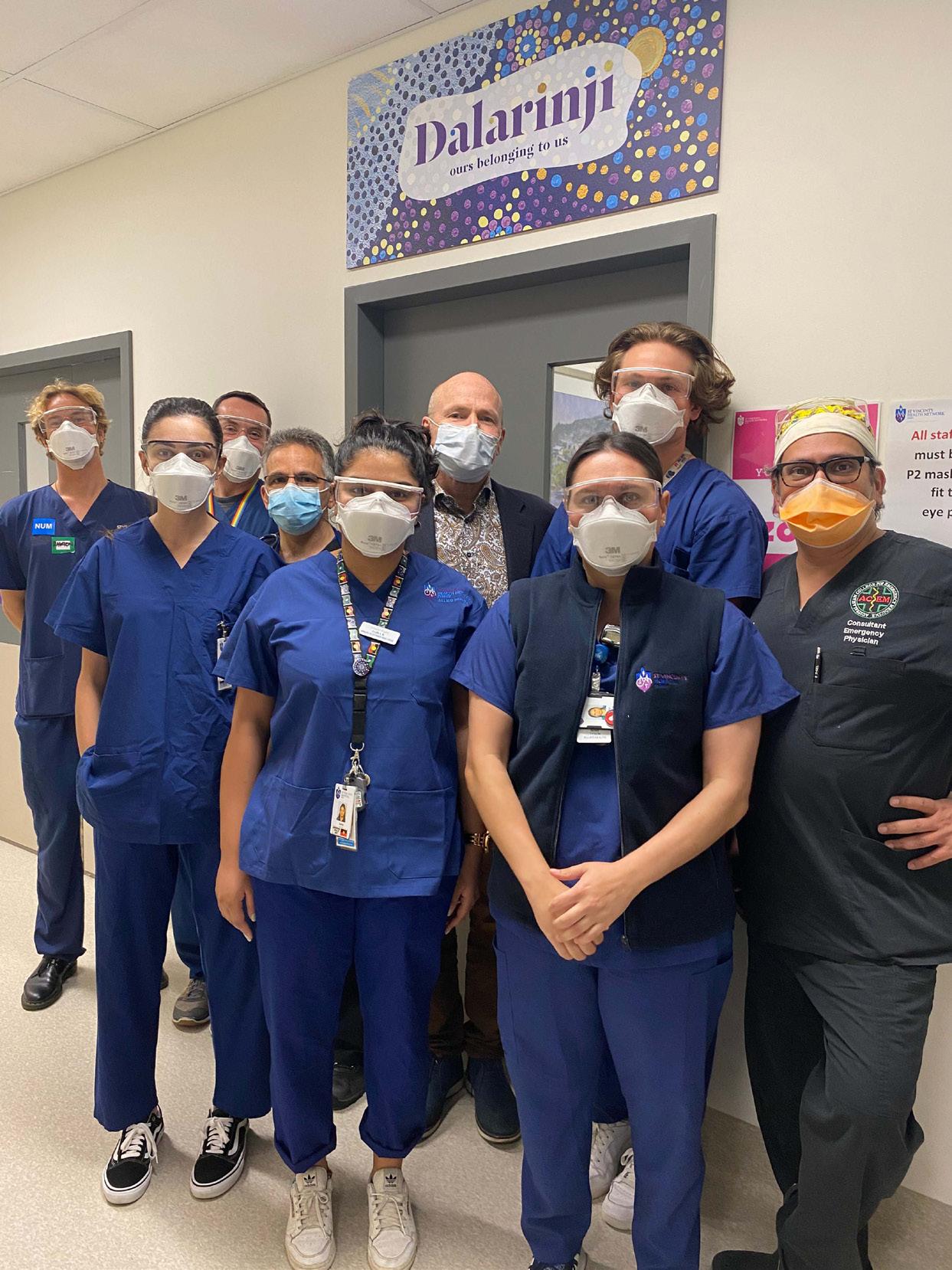
4 minute read
Dalarinji, ‘Ours, Belonging to Us’
A/PROF PAUL PREISZ Director of Emergency Department, St Vincent’s Health Australia and Senior Staff Specialist at St Vincent’s Hospital Sydney
A Flexible clinic in the Emergency Department
Aboriginal people have long been underserved by the Australian health care system. Structural racism has been shown to be endemic, problematically perpetuating neo-colonialism and erroneous stigma. This is a medically vulnerable group of patients with a high proportion having complex and chronic conditions, poor overall health outcomes and socio-economic disparity.
Recent figures show that life expectancy for Aboriginal men is 71.6 years and for women is 75.6 years, which is 8.6 years and 7.8 years respectively less than their non-Aboriginal counterparts.
Aboriginal people have accounted for 6.7% of the 2.8 million Emergency Department (ED) presentations in NSW.
The rate of ‘Incomplete Treatment’ in Emergency Departments is a measure which particularly demonstrates that emergency healthcare is not equitably or optimally provided to First Nations Peoples. This measure comprises the proportion of all patients who presented to the ED but did not wait to be seen by a healthcare professional — ‘Did Not Wait’ (DNW), and those who left before care was completed — ‘Discharged Against Medical Advice’ (DAMA).
Typically, the rate of incomplete treatment would be expected to be 5% or so, however data collected in 2019 at St Vincent’s Hospital Sydney showed that for Aboriginal patients this number had climbed to more than 25%.
Rigorous research in this field is very limited, and many prior change models failed to provide sustained improvement. An extensive process was undertaken to try to understand the causes for high rates of incomplete treatment for Aboriginal patients. The co-design approach involved consultation with patients and health care professionals, and from inception was guided and supported by the Aboriginal Health Unit of St Vincent’s Hospital Sydney, promoting a culturally safe model. >

Staff at St Vincent’s Hospital Sydney welcome patients with new signage.
The multifactorial environmental issues identified included a process-driven, rigid ED system which did not provide the flexibility which was intrinsically valued by Aboriginal patients. Hospitals are viewed negatively by Aboriginal people for many reasons, often seen as an orthodox, authoritative institution and a reminder of past paternalistic wrongs such as the Stolen Generations. Health literacy has been generally lower, with little knowledge of how Emergency Departments function, and often perceived as places where Aboriginal people went to die.
Very extensive changes were made to address these issues with the umbrella title ‘Stay’n In, Stay’n Deadly’. Physical changes included the re-design of the ED to include Aboriginal Motifs and welcoming messages. Staff training included clinical ethics regarding distributive and procedural justice, and cultural awareness was introduced in many formats including on-line and after-hours seminars.
A totally new system of flexible care for Aboriginal patients was introduced with the name Dalarinji — ‘Ours, belonging to us’. Aboriginal patients were greeted by Aboriginal Health staff as soon as possible after arrival. Senior medical staff were rostered to provide medical care with the shortest possible waiting time with a strong emphasis on flexibility. This included ongoing care which enabled patients to come and go as they needed, allowing for maximum flexibility with a ‘Flexiclinic’ approach and avoided the need for

A/Prof Paul Preisz surrounded by the ED team and Aboriginal Health Workers who make this service such a success.
appointment times and defined physical clinic rooms. Many other measures were introduced including rapid medical imaging and pharmacy systems as well as improved links with Aboriginal community supports and with other health care providers.
Ultimately the physical, systems and cultural changes were about prioritising Aboriginal patients and creating a sustained workable adaptation to appropriately suit their needs. Results were dramatic. Within a few months of introducing the system the rates of incomplete treatment had fallen to the levels seen in non-Aboriginal patients and have remained at this level for eighteen months. Feedback from patients, their families and community has been very positive and data around all the standard ED measured outcomes shows sustained improvement.
Notably, outcomes for other groups were not adversely affected and it seems that making changes where they were most needed actually led to improvements across the entire system of ED care.
Dalarinji has been published in peer reviewed medical journals, has been presented widely and has won a number of local, state and overseas awards. The work is ongoing, and the model remains a unique yet feasible example of successfully ‘Closing the Gap’ in an equitable and sustainable way. ha










